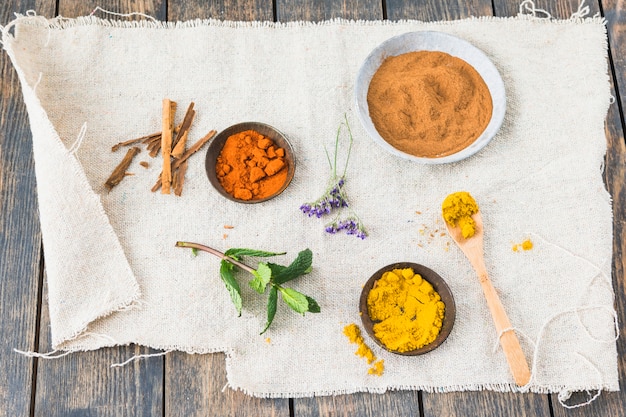Ask Ayurvedic doctor a question and get a consultation online on the problem of your concern in a free or paid mode. More than 2,000 experienced doctors work and wait for your questions on our site and help users to solve their health problems every day.
Shop Now in Our Store
Ayurvedic Treatment for Tailbone Pain – Natural Remedies for Coccyx Pain Relief

Introduction to Ayurvedic Treatment for Tailbone Pain
Tailbone pain, or coccygodynia, can be debilitating and challenging to manage with conventional treatments alone. Ayurvedic treatment for tailbone pain offers a natural, holistic approach that emphasizes restoring balance, reducing inflammation, and enhancing the body's innate healing mechanisms. By incorporating time-tested Ayurvedic remedies and lifestyle modifications, individuals can find relief from tailbone discomfort and improve overall well-being.
Historical Roots & Ayurvedic Significance
Ayurveda, the ancient system of medicine from India, has long addressed musculoskeletal disorders and chronic pain through individualized therapies. In Ayurvedic texts, pain is often seen as an imbalance of the doshas—Vata, Pitta, and Kapha. Tailbone pain is commonly associated with aggravated Vata, which can lead to stiffness and discomfort in the lower back and coccyx area. Ayurvedic practitioners have historically recommended herbal formulations, massage therapies, and dietary adjustments to restore doshic balance and alleviate pain naturally.
Key Components & Therapeutic Benefits
Ayurvedic treatment for tailbone pain utilizes a combination of herbal remedies, external therapies, and lifestyle interventions. Key components include:
-
Herbal Formulations:
Remedies such as Ashwagandha (Withania somnifera), Guggulu (Commiphora mukul), and Shallaki (Boswellia serrata) are used for their anti-inflammatory and analgesic properties. These herbs help reduce inflammation and promote tissue repair in the affected area. -
External Therapies:
Abhyanga (Ayurvedic oil massage) with medicated oils like Mahanarayan oil can alleviate muscle tension and improve blood circulation, contributing to pain relief and enhanced healing. -
Panchakarma Procedures:
Detoxification therapies, including Vamana (therapeutic emesis) and Virechana (therapeutic purgation), help remove accumulated toxins (Ama) that may contribute to chronic pain conditions. -
Diet & Lifestyle Modifications:
A diet rich in anti-inflammatory foods, along with gentle exercises and yoga postures, can support the healing process and prevent further aggravation of tailbone pain.
How Ayurvedic Treatment for Tailbone Pain Works: The Science Behind the Approach
The holistic approach of Ayurveda addresses tailbone pain on multiple levels:
-
Dosha Balancing:
By reducing the aggravation of Vata dosha, which is responsible for movement and nerve impulses, Ayurvedic treatments help restore balance and alleviate chronic pain. -
Anti-inflammatory Effects:
Herbal remedies such as Shallaki and Guggulu work at the cellular level to reduce inflammation and ease discomfort in the coccyx area. -
Improved Circulation:
Techniques like Abhyanga massage enhance blood flow, which is essential for delivering nutrients to damaged tissues and promoting natural healing. -
Detoxification:
Panchakarma procedures help eliminate toxins from the body, reducing systemic inflammation and supporting the overall healing process.
Choosing the Right Ayurvedic Remedies & Guidance
When seeking Ayurvedic treatment for tailbone pain, consider the following:
-
Consult a Certified Ayurvedic Practitioner:
Personalized treatment plans ensure that therapies are tailored to your unique constitution (Prakriti) and specific pain triggers. -
Prioritize High-Quality Herbal Products:
Choose formulations that use organic, authentic herbs to maximize efficacy and safety. -
Integrate with Conventional Care:
Ayurvedic remedies can complement conventional treatments, but always consult with healthcare professionals to develop a comprehensive treatment plan.
Recommended Dosage & How to Use Ayurvedic Remedies
Dosage and application of Ayurvedic remedies for tailbone pain vary based on individual needs. General guidelines include:
-
Herbal Supplements:
Follow the dosage recommendations provided by your Ayurvedic practitioner. For example, a typical regimen may include taking herbal capsules containing Ashwagandha or Guggulu once or twice daily. -
Topical Applications:
Apply medicated oils like Mahanarayan oil to the affected area during an Abhyanga massage. This can be done daily or several times a week based on professional advice. -
Lifestyle Practices:
Incorporate gentle yoga, stretching exercises, and dietary changes to support overall pain management and enhance the benefits of herbal remedies.
Potential Side Effects & Precautions
While Ayurvedic treatments for tailbone pain are generally safe when administered correctly, certain precautions should be observed:
-
Individual Sensitivities:
Some individuals may experience mild digestive discomfort or skin irritation from herbal supplements or topical oils. Discontinue use if adverse reactions occur. -
Pregnancy & Nursing:
Special care should be taken when considering Ayurvedic treatments during pregnancy or lactation; always consult with a practitioner beforehand. -
Professional Supervision:
Always follow the guidance of a certified Ayurvedic professional to ensure proper dosage, application, and integration with other treatments.
Frequently Asked Questions About Ayurvedic Treatment for Tailbone Pain
How does Ayurvedic treatment help alleviate tailbone pain?
Ayurvedic treatment alleviates tailbone pain by balancing aggravated doshas, reducing inflammation with potent herbs, enhancing circulation through massage therapies, and detoxifying the body via Panchakarma procedures.
What are the main herbs used for tailbone pain relief in Ayurveda?
Key herbs include Ashwagandha for stress reduction and rejuvenation, Guggulu for its anti-inflammatory effects, and Shallaki for relieving pain and improving joint function.
Can Ayurvedic therapies be combined with conventional treatments for tailbone pain?
Yes, Ayurvedic therapies can complement conventional treatments. However, it is important to consult with both Ayurvedic and conventional healthcare providers to ensure a safe and coordinated approach.
What role does diet play in managing tailbone pain according to Ayurveda?
A diet rich in anti-inflammatory foods, such as fresh fruits, vegetables, and whole grains, can help reduce systemic inflammation and support the healing process. Avoiding processed foods and excess caffeine is also recommended.
How often should massage therapies be performed for effective pain relief?
Massage therapies like Abhyanga are typically recommended several times a week, depending on the severity of pain and individual response. A certified Ayurvedic practitioner can tailor a schedule specific to your needs.
Are there any specific yoga poses recommended for tailbone pain?
Gentle yoga postures and stretches, particularly those that target the lower back and hips, can help alleviate tension around the tailbone. Poses like the Cat-Cow stretch, Child’s Pose, and gentle spinal twists are often recommended.
Where can I receive authentic Ayurvedic treatment for tailbone pain?
Authentic Ayurvedic treatment should be sought from reputable Ayurvedic clinics or certified practitioners who can provide personalized therapy and ensure the use of high-quality herbal products.
Conclusion & Expert Insights
Ayurvedic treatment for tailbone pain offers a comprehensive, natural approach to managing coccyx discomfort by balancing the doshas, reducing inflammation, and promoting tissue regeneration. Integrating herbal supplements, massage therapies, detoxification procedures, and lifestyle modifications can yield significant relief and improve overall quality of life. With the guidance of a certified Ayurvedic practitioner, you can develop a tailored treatment plan that not only alleviates pain but also enhances long-term wellness.
References & Further Reading
-
Sharma, P.V. (1995). Ayurvedic Healing: A Comprehensive Guide
An in-depth exploration of Ayurvedic principles and therapies, including traditional treatments for musculoskeletal pain. -
Lad, V. (2002). Ayurveda: The Science of Self-Healing
This text provides insights into the integration of Ayurvedic remedies with modern health practices, offering valuable information on managing chronic pain. -
National Institute of Ayurveda
A reliable resource for research, publications, and educational materials on various Ayurvedic treatments. -
Journal of Ayurveda and Integrative Medicine
A peer-reviewed journal featuring research articles on the efficacy and safety of Ayurvedic formulations and therapies.
This article is checked by the current qualified Dr. Harsha Joy and can be considered a reliable source of information for users of the site.



